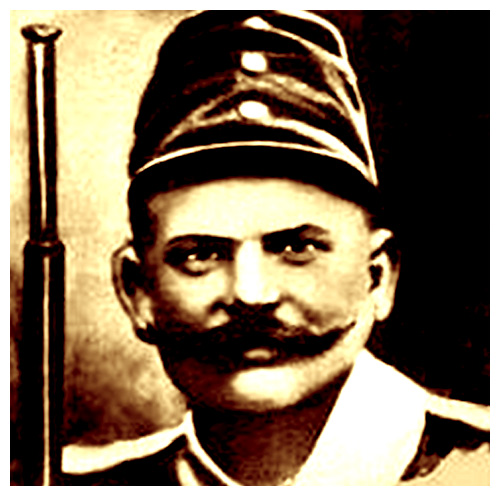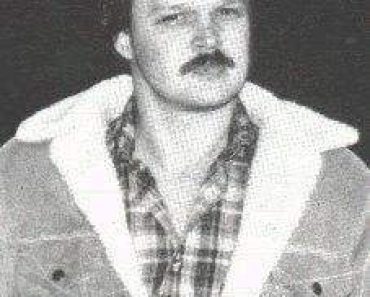Bela Kiss | Serial Killer

Bela Kiss
Born: 07-28-1877
The One That Got Away
Hungarian Serial Killer
Crime Spree: 1900–1914
Death: 02-05-1915
A family man and amateur astrologer, Hungarian Bela Kiss began his career as a serial murderer relatively late in life. In February of 1912, at forty years of age, Kiss moved to the village of Czinkota with his wife Marie, some fifteen years his junior. Within a matter of weeks, Marie had found herself a lover, one Paul Bikari, and in December 1912, Kiss sadly told his neighbors that the couple had run off together, leaving him alone. In place of his wife, Bela hired an elderly housekeeper. She, in turn, learned to ignore the parade of women who came to spend time with Czinkota’s newly-eligible bachelor.
Around this same time, Bela Kiss began collecting large metal drums, informing the curious village constable that they were filled with gasoline, expected to be scarce with the approach of war in Europe. Budapest authorities, meanwhile, were seeking information on the disappearance of two widows, named Schmeidak and Varga, who had not made contact with their friends or relatives for several weeks. Both women had been last seen in the company of a man named Hoffmann, dwelling near the Margaret Bridge in Budapest, but he had also disappeared without a trace. Czinkota’s constable was generally aware of the investigation, but he saw no reason to connect Herr Hoffmann with the quiet, unassuming Bela Kiss.
In November of 1914, Kiss was drafted into military service, leaving for the front as soon as he was sworn into the ranks and issued gear. Another eighteen months would pass before officials in Czinkota were informed that Bela Kiss had died in combat, one more grim statistic for the casualty rosters in that bloody spring of 1916.
Bela Kiss
Bela was forgotten by the townsfolk until June, when soldiers visited Czinkota in a search for stockpiled gasoline. The village constable remembered Kiss, his cache of metal drums, and led a squad of soldiers to the dead man’s home. Inside the house, the searchers turned up seven drums, but they contained no gasoline. Instead, each drum contained the naked body of a woman, strangled and preserved in alcohol. The drawers of Kiss’s bureau overflowed with cards and letters from women responding to newspaper advertisements, purchased by Bela Kiss in the name of Hoffmann, a self-described “lonely widower seeking female companionship.” Czinkota’s constable recalled that there had been more drums, in fact many more, at that. A search of the surrounding countryside revealed another seventeen, each with a pickled corpse inside. Authorities from Budapest identified the missing widows. Plus, Marie Kiss, occupying her own drum and her lover, Paul Bikari, the only male among the twenty-four recovered victims, was also identified in yet another.
Homicide detectives theorized that Bela Kiss had slain his wife and her clandestine lover in a jealous rage, disposing of their bodies in a fashion that — he thought — eliminated any possibility of subsequent discovery. The crime apparently unleashed some hidden mania, and Kiss had spent the next two years pursuing lonely women with a passion, bilking several of their savings prior to strangling them and sealing them inside of makeshift funeral vaults. It was a grisly case, but Bela Kiss had gone on to face a higher court.
Or Had He
In the spring of 1919, Bela Kiss was sighted on the Margaret Bridge in Budapest, “Herr Hoffmann’s” prewar stomping grounds. Police investigation proved that Kiss had switched his papers with a battlefield fatality, assuming the dead man’s identity to make good his escape. That knowledge brought detectives no closer to their man, however, for Kiss had slipped the net again.
The futile search went on. In 1924, a deserter from the French Foreign Legion told officers of the Surete about a fellow legionnaire who entertained the troops with tales of his proficiency with the garrote. The soldier’s name was Hofman, and he matched descriptions of Bela Kiss, but the lead was another dead end. By the time Hungarian police were informed, Legionnaire “Hofman” had also deserted, vanishing without a trace.
In 1932, a New York homicide detective, Henry Oswald, was convinced that he had sighted Bela Kiss, emerging from the Times Square subway station. Nicknamed “Camera Eye” by colleagues, after his uncanny memory for faces, Oswald was unshakable in his belief that Kiss — who would have been approaching 70 — was living somewhere in New York. Unfortunately, Times Square crowds prevented Oswald from pursuing Kiss, and he could only watch in helpless rage as his intended quarry disappeared.
In 1936, a rumor spread that Bela was working as a janitor, in some apartment buildings on Sixth Avenue. Again, he managed to evade police, and there the trail grew cold. Whatever finally became of Bela Kiss, if he was ever in New York at all, remains a mystery, beyond solution with the passage of a full half-century. In Hungary, he is remembered as the one who got away.
source: murderpedia




























































